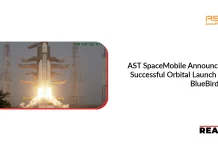United Launch Alliance (ULA) has successfully launched Amazon’s first operational satellites for Project Kuiper aboard an Atlas V rocket. The mission, designated Kuiper-1, lifted off precisely at 7:01 p.m. EDT from Space Launch Complex-41 at Cape Canaveral Space Force Station, marking a major milestone in Amazon’s plan to deploy a robust broadband satellite network in low-Earth orbit (LEO).
The Kuiper-1 mission signals the start of full-scale deployment for the Project Kuiper satellite constellation, designed to bring fast and affordable internet connectivity to underserved and remote communities around the globe. ULA is Amazon’s key partner for this historic initiative, set to deliver a significant portion of the 3,200+ planned satellites into orbit.
“This launch is an incredible milestone in Amazon’s ambitious initiative to provide fast, reliable broadband service to unserved and underserved communities around the world,” said Gary Wentz, ULA vice president of Government and Commercial Programs. “We have worked diligently with the Project Kuiper team to place this important mission on orbit and are grateful for the opportunity to continue building upon this dynamic partnership.”
Also Read: Huawei Launches Five Aviation Solutions to Accelerate Intelligence
Building on the successful deployment of two prototype satellites in 2023, ULA is scheduled to conduct an additional seven launches using its trusted Atlas V rocket. More notably, the majority of upcoming missions—38 launches—will utilize ULA’s advanced Vulcan rocket, representing the industry’s most significant commercial launch agreement to date. This high-frequency launch cadence will support Amazon’s objective of delivering widespread global connectivity while reinforcing ULA’s position as a leader in commercial launch services.
“This launch marks the first step towards the future of our partnership and increased launch cadence. We have been steadily modifying our launch facilities in Cape Canaveral to support the capacity for future Project Kuiper missions in a manner that will ultimately benefit both our commercial and government customers as we endeavor to save lives, explore the universe and connect the world,” said Tory Bruno, ULA president and CEO. “The addition of a second launch processing capability allows for dual, simultaneous launch processing between both integration facilities seamlessly.”




